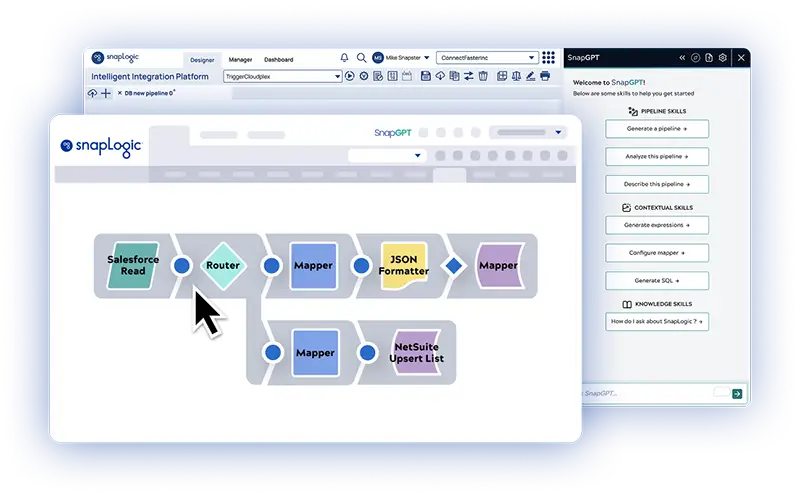Tool sprawl is a common problem in modern data stacks, where an organization ends up using a multitude of tools that serve similar or overlapping purposes. This can lead to inefficiencies, increased complexity, and difficulties in maintaining and upgrading the stack.
Before we get into solving tool sprawl in your modern data stack (MDS), we should define what a modern data stack is, and what tools you’ll typically find within an organization’s MDS.
What Is a Modern Data Stack?
A modern data stack is a collection of tools and technologies that are used to manage and analyze data in an organization. This typically includes tools for data storage, data processing, data visualization, data governance, and other key functions.
A modern data stack is designed to support the full range of data management and analysis needs in an organization. It may include tools for working with structured and unstructured data, tools for performing complex data analysis, and tools for visualizing and reporting on data.
The specific tools and technologies included in a modern data stack will vary depending on the specific needs of the organization. However, in general, a modern data stack will include a combination of on-premises and cloud-based tools, and may include both open-source and proprietary technologies.
Overall, a modern data stack is an essential component of an organization’s data management strategy, and can help to ensure that data is managed and analyzed in a consistent, efficient, and effective manner.
There are many different tools that are commonly used in modern data stacks. Some of the most popular include:
- Data storage and management tools, such as relational databases (e.g. MySQL, Oracle), non-relational databases (e.g. MongoDB, Cassandra), and data warehouses (e.g. Amazon Redshift, Snowflake, Databricks, Azure Synapse, and Google BigQuery).
- Data processing tools, such as Hadoop, Spark, Iceberg, and Flink.
- Data visualization, business intelligence (BI), and reporting tools, such as Tableau, Qlik, Looker, and PowerBI.
- Data governance and management tools, such as Collibra, Informatica, and Alation.
- Machine learning (ML) and artificial intelligence (AI) tools, such as TensorFlow, PyTorch, and scikit-learn.
- Collaboration and data sharing tools, such as Slack, Asana, and Jira.
- Data ingestion tools, such as Alooma, Apache NiFi, AWS Glue, Fivetran, StreamSets, and Talend. These tools are used to capture and transfer data from a variety of source endpoints, including databases, files, and streaming data sources to data warehouse destination endpoints.
- Data transformation tools, such as Apache Beam, dbt and Google Cloud Data Fusion. These tools are used to transform and cleanse data, and to prepare it for analysis or storage.
- Reverse ETL tools, such as Hevo Data and Hightouch. These tools are used to unload, or export, data from databases and data warehouses and then load the data into other sources, such as applications.
- Data orchestration tools, such as Apache Airflow, Azure Data Factory, and Google Cloud Composer. These tools are used to automate and manage the flow of data between different systems and processes in a data stack.
These are just a few examples of the many tools that are commonly used in modern data stacks. The specific tools and technologies that are used will vary depending on the specific needs of the organization.
As you can tell, there are a lot of tools, that all rely on each other. This leads us to our next topic… tool sprawl.
What Is Tool Sprawl?
Tool sprawl is a situation in which an organization uses a large number of tools that serve similar or overlapping purposes.
This can lead to inefficiencies, increased complexity, and difficulties in maintaining and upgrading the stack.
How Can You Overcome Tool Sprawl?
To overcome tool sprawl, organizations need to take a strategic approach to tool selection and management. This should involve regular review and evaluation of the tools being used, and a focus on standardization and consolidation where possible.
One key step in addressing tool sprawl is to establish a clear governance structure for the data stack. This should involve defining roles and responsibilities for different teams and individuals, and establishing clear policies and procedures for the selection, implementation, and maintenance of tools. This can help to ensure that new tools are carefully evaluated and integrated into the stack in a way that avoids duplication and maximizes efficiency.
Another important step is to establish a common data architecture that can support the use of multiple tools. This can help to ensure that the data stack is flexible and scalable, and that it can accommodate new tools and technologies as they emerge. It can also help to improve data quality and consistency, by providing a consistent framework for data management and analysis.
In addition to these steps, organizations can also consider adopting a platform-based approach to data management. This involves using a single, integrated platform that can support the full range of data management and analysis needs, rather than relying on multiple tools. This can help to simplify the data stack and reduce the complexity of managing and maintaining multiple tools.
Overall, overcoming tool sprawl in a modern data stack requires a strategic, coordinated approach that involves regular review and evaluation of the tools being used, and a focus on standardization, consolidation, and integration. By taking these steps, organizations can improve the efficiency and effectiveness of their data stack, and ensure that they are able to extract maximum value from their data.
Five Ways to Simplify Your Modern Data Stack
There are a number of steps that organizations can take to simplify their modern data stack. These include:
- Establish a clear governance structure for the data stack. This should involve defining roles and responsibilities for different teams and individuals, and establishing clear policies and procedures for the selection, implementation, and maintenance of tools.
- Conduct regular reviews and evaluations of the tools being used. This can help to identify any tools that are not being used effectively or that are not providing significant value, and can allow the organization to consider alternatives or consolidations.
- Focus on standardization and consolidation where possible. This can involve using a common set of tools across different teams or departments, or consolidating multiple tools into a single platform.
- Adopt a common data architecture. This can help to ensure that the data stack is flexible and scalable, and that it can accommodate new tools and technologies as they emerge.
- Consider using a platform-based approach to data management. This involves using a single, integrated platform that can support the full range of data management and analysis needs, rather than relying on multiple tools.
By taking these steps, organizations can simplify their modern data stack and reduce the complexity and inefficiency associated with tool sprawl. This can help to improve the efficiency and effectiveness of their data management and analysis efforts, and can enable them to extract maximum value from their data.









